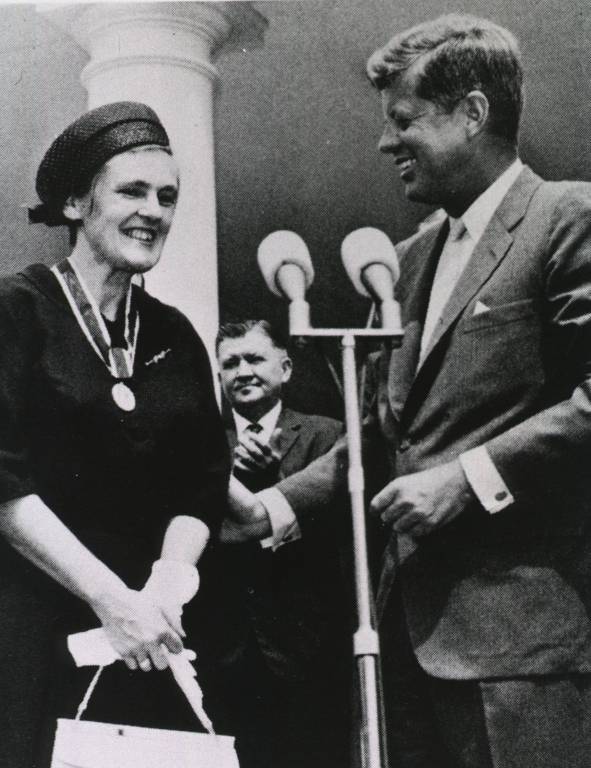In the late 1950s, a new over-the-counter sedative, thalidomide was introduced in Germany. At the time, it was the only non-barbiturate sedative on the market and it was marketed as an extraordinarily safe sleeping aid. The drug company “advertised their product as ‘completely safe’ for everyone, including mother and child, ‘even during pregnancy,’ as its developers ‘could not find a dose high enough to kill a rat.’” Besides being used as a sedative and sleeping aid, doctors frequently prescribed thalidomide, off-label, for the treatment of morning sickness associated with pregnancy. At its peak, sales of the drug “nearly match[ed] those of aspirin.”
In 1961, Dr. W.G. McBride wrote a letter to The Lancet documenting cases of birth defects associated with the use of the drug. He noted that, while the ordinary rate of congenital defects was 1.5%, he had noticed that the rate among those who used thalidomide was closer to 20%. He queried readers of the medical journal, “Have any of your readers seen similar abnormalities?” This marked the first recognition of the drug’s devastating side effects. (Sadly Dr. McBride’s later career was less successful. He was temporarily stripped of his medical license after he was found to have falsified scientific data in a different study.)
In fact, taking thalidomide during pregnancy often resulted in what is normally an exceedingly rare defect known as phocomelia syndrome, characterized by underdeveloped limbs. The hereditary form of the disease is estimated to affect perhaps a dozen children per year. In the few years thalidomide was on the market at least 10,000 children worldwide (likely significantly more) were born with birth defects, primarily phocomelia, as a result of their mothers taking the drug during pregnancy. Images of children born with stunted and deformed arms and legs would be seared in global consciousness—the symbol of regulatory systems that had failed to protect the public health.
A generation of American children was spared thanks almost entirely to a single regulator. Dr. Frances Oldham Kelsey had just begun her job at the U.S. Food and Drug Administration (FDA). She was one of the few women at the agency during a time of rampant sexism. As she recounts: “When a woman took a job in those days, she was made to feel as if she was depriving a man of the ability to support his wife and child.”
She was charged with reviewing applications for new drugs and thalidomide was among her first applications. Robert McFadden describes her conflict with the drug’s manufacturer, Merrell:
Laws governing new drugs had been on the books for decades but were not always rigorously enforced, and F.D.A. approval was often routine. But Dr. Kelsey, working with a chemist and a pharmacologist, found the evidence for Merrell’s claims about Kevadon [the brand name for thalidomide] to be insufficient. She withheld approval and asked Merrell for more data on toxicity, strength and purity.
Merrell stood to make millions and was anxious to get moving. It had tons of Kevadon in warehouses, ready for marketing, and 1,000 American doctors had already been given samples for “investigational” research. The company supplied more data, but also mounted a campaign to pressure Dr. Kelsey. Letters, calls and visits from Merrell executives ensued. She was called a fussy, stubborn, unreasonable bureaucrat.
Ultimately she stalled drug approval long enough for damning evidence from abroad to accumulate. The drug was never approved in the United States. In all, just seventeen American babies are known to have been born with birth defects originating from thalidomide—their mothers having been given doctors’ samples of the unapproved drug. Thousands of children were likely spared deformity and death by her scientific rigor and tenacity. She went on to have a long career at FDA, remaining at the agency until the age of 90. On August 7, she died at the age of 101.
Dr. Kelsey’s story serves as an inspiring reminder of the wide-ranging impacts individuals can have, even in a bureaucracy as seemingly monolithic and faceless as the federal government. By refusing to abandon her public duty, even in the face of enormous industry pressure, her story holds important lessons for modern civil servants faced with industry’s ever-increasing influence over its regulators. We can only hope that when the FDA is faced with the next thalidomide, there will be someone as courageous as Dr. Kelsey protecting public health.





